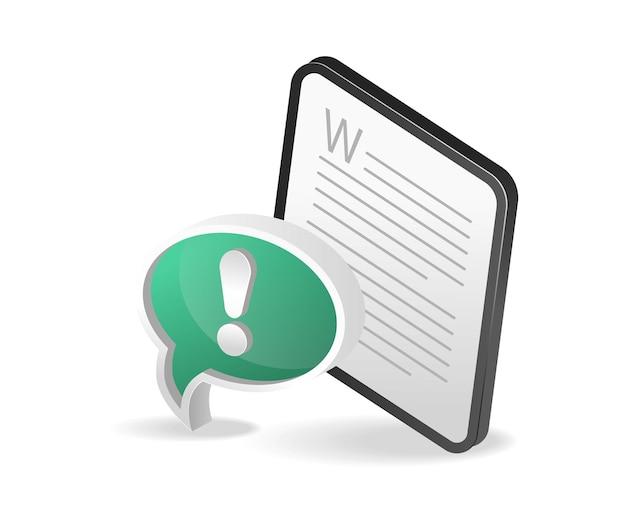Do you ever find yourself needing information from a university but aren’t sure how to approach them? In today’s digital age, sending an email is often the easiest and most efficient way to gather the information you need. But how do you craft an email that is polite, professional, and gets straight to the point?
In this blog post, we will dive into the essential steps of writing an effective email to a university, specifically when asking for information. Whether you’re a prospective student looking for details about a program, a researcher seeking data for your project, or simply curious about a university’s policies, we’ve got you covered. We’ll discuss the best practices, tips, and tricks to ensure your email is well-received and answered in a timely manner. So let’s jump right in and master the art of emailing a university for information!

How to Email a University for Information
So, you want to contact a university and gather some valuable information. Great idea! But wait, how do you email a university asking for information without sounding like a clueless freshman? Well, fear not! I’ve got you covered with some handy tips and tricks to craft that email like a seasoned pro.
Find the Right Contact
Before you hit that “compose” button, make sure you’re sending your email to the right person. Universities are vast institutions with lots of departments, so you don’t want your message to end up in the wrong hands (trust me, the economics professor has no clue how to answer your questions about the biology program).
Subject Line: The Art of Attention-Grabbing
Your subject line is like the cover of a book; it needs to intrigue and entice the reader to open your email. Instead of a snooze-worthy subject line like “Request for Information,” go for something catchy and concise, like “Calling all Info Gurus! Seeking Wisdom About Your University!” Not only does it let your personality shine, but it also captures attention and can make someone smile.
Dear [Name], Not Dear [Recruiter]
Avoid the temptation to start your email with a generic “To Whom It May Concern” or worse, “Dear Sir/Madam.” Take a few extra minutes to find the name of the appropriate person to address. It shows you’ve done your homework and adds a personal touch. Plus, it’s always more pleasant to be called by your name rather than “Recruiter #273.”
Start with a Friendly Greeting
Now that you’ve got the right name, use it to kick-start your email with a warm greeting. Something like “Dear Professor Willowby” or “Hello, Admissions Team” sets a friendly tone and shows you’re not just firing off a copy-paste message to every university on your list.
Get Straight to the Point
Universities are busy places, so don’t waste their time with lengthy introductions and random anecdotes. Instead, get right to the point and succinctly state the purpose of your email. Let them know what information you’re seeking and why. Remember, brevity is the soul of wit (and a well-crafted email).
Show Genuine Interest
To stand out from the crowd, express your genuine interest in the university. Universities love students who are enthusiastic about their programs and campus life. Don’t be shy to share why you’re drawn to their institution and what you hope to achieve. Inject your personality and let your passion shine through your words.
Ask Thoughtful Questions
It’s not enough to simply request information; you need to demonstrate that you’ve done some research. Ask thoughtful questions that go beyond what you can find on the university’s website. Show them you’ve dug a little deeper. This not only impresses the reader but can also help you gain valuable insights that aren’t readily available to everyone.
Be Polite and Gracious
Remember your manners! Just because you’re not face-to-face doesn’t mean you can’t be polite and appreciative. Use words like “please” and “thank you” generously throughout your email. Remember, kind gestures can go a long way, even in the virtual world.
Seal It with a Polished Closing
As you wrap up your email, keep the end in mind. Politely request a response and provide your contact information, including your full name and phone number. And don’t forget a gracefully worded closing, like “Looking forward to hearing from you soon!” or “Thank you for your time and consideration.” It adds a dash of finesse to your professional communication.
Now, armed with this knowledge, go forth and conquer that email! Universities are just waiting to shower you with oodles of insightful information about their programs and campus life. Just remember, a dash of humor and a sprinkle of charm never hurt anyone (unless you’re allergic to laughter). Good luck, future brainiac!

FAQ: How to Email a University Asking for Information
How to Write an Effective Request Letter to a University
When it comes to requesting information from a university, a well-crafted letter can make all the difference. Here are a few tips to write an effective request letter:
Be Courteous and Professional
To make a positive impression, it’s essential to maintain a respectful tone throughout your letter. Be courteous, use polite language, and address the recipient formally.
Start with a Striking Opening
Capture the reader’s attention right from the start by opening your letter with an engaging and personalized introduction. Avoid generic openings and try to stand out from the crowd.
Clearly State Your Purpose
Clearly and concisely explain what information you are seeking from the university. Whether it’s details about a specific program, admission requirements, or financial aid options, make sure your request is clear and specific.
Highlight Your Interest
Show genuine interest in the university by explaining why you have chosen to reach out to them. Share any specific research you have conducted about the institution and highlight how it aligns with your academic or career goals.
Provide Relevant Background Information
Give the university some context about your academic background, achievements, and any relevant experience. This information can help them understand your perspective and assist you more effectively.
Restate Your Request and Express Gratitude
In the closing paragraph of your letter, restate your request for information and express gratitude for their time and consideration. Sign off with a polite and professional closing phrase such as “Sincerely” or “Best regards.”
How to Email a University inquiring about information
In today’s digital age, email has become an integral part of communication. When emailing a university to inquire about information, follow these guidelines:
Craft a Clear and Concise Subject Line
The subject line of your email should clearly indicate the purpose of your message. A subject line like “Request for Information: [Program Name]” is specific and ensures your email doesn’t get lost in a crowded inbox.
Use a Professional and Personable Salutation
Address the recipient using their appropriate title (such as Dr., Professor, or Admissions Officer) followed by their last name. If you don’t know the individual’s name, a polite greeting like “Dear Admissions Team” is a safe choice.
Introduce Yourself Briefly
Start your email with a brief introduction, stating your name, your academic or career background, and the reason for your inquiry. Keep this section concise and get to the point quickly.
Clearly Outline Your Request
In a separate paragraph, clearly state what information you are seeking from the university. Be specific and provide any relevant details to help them understand your needs better.
Display Enthusiasm and Interest
Demonstrate your enthusiasm for the university and the program you are interested in. Briefly explain why you have chosen their institution and how it fits into your educational and professional aspirations.
Conclude with a Polite Closing
Wrap up your email by expressing gratitude for their time and consideration. Use a courteous sign-off such as “Best regards” or “Thank you.” Don’t forget to include your full name and contact information in your email signature.
How to Write a Polite Request
When making a request, it’s crucial to strike the right balance between being polite and getting your point across effectively. Here are some tips for writing a polite request:
Be Clear and Specific
Ensure your request is clear, specific, and easily understandable. Ambiguity can lead to confusion and delay in getting the information you need.
Use Polite Words and Phrases
Choose your words carefully to convey your request politely. Employ phrases such as “Would it be possible to…,” “I would greatly appreciate…,” or “If it’s not too much trouble…”
Express Gratitude
Demonstrate your gratitude in advance by thanking the recipient for their time and assistance. Appreciation goes a long way in creating a positive impression and establishing goodwill.
Keep it Concise
Respect the recipient’s time by keeping your request concise and to the point. Long-winded explanations may deter them from offering prompt assistance.
How to Make a Fast Request without Being Annoying
When time is of the essence, it’s crucial to communicate efficiently without appearing pushy or annoying. Follow these tips to make a fast request without being overbearing:
Be Direct and Clear
Clearly state your request right at the beginning of your communication. By being upfront, you save the recipient’s time and show them that you value their busy schedule.
Offer a Reason or Deadline
If there is a specific reason or deadline behind your urgent request, kindly mention it. Providing context can help the recipient understand the urgency and prioritize your request accordingly.
Use Polite Language
Even though your request is time-sensitive, it’s essential to maintain a polite and respectful tone. Avoid sounding demanding or entitled, as this may lead to a negative response.
Express Understanding and Flexibility
Acknowledge that you are making an expedited request and express your understanding of any inconvenience it may cause. Show willingness to be flexible and accommodating if necessary.
How to Write a Formal Email Requesting Help
When writing a formal email requesting help, follow these tips to ensure you make a professional and effective appeal:
Use a Clear and Informative Subject Line
Choose a subject line that accurately reflects the purpose of your email and captures the recipient’s attention. A subject line like “Request for Assistance: [Brief Description]” is concise and informative.
Begin with a Polite and Respectful Salutation
Address the recipient formally, using appropriate titles and last names. If you’re unsure about the recipient’s gender or name, “Dear [Job Title] [Last Name]” is a safe option.
Introduce Yourself and Your Purpose
Provide a brief introduction, stating your name, your affiliation (if applicable), and the reason you are reaching out for help. Be concise and get straight to the point.
Clearly Explain Your Situation and Request
Elaborate on the problem or challenge you are facing and clearly express what kind of help you need. The more specific you are about your situation, the easier it will be for the recipient to provide assistance.
Share Any Relevant Supporting Information
If you have any relevant documents, data, or additional context that can help the recipient understand your situation better, attach them to your email. However, ensure the attachments are necessary and don’t overload the recipient with unnecessary files.
Express Your Appreciation in Advance
Thank the recipient in advance for their time, consideration, and willingness to help. Just as in any formal request, expressing gratitude is both polite and shows good manners.
Remember, when reaching out for help, it’s important to be respectful of the recipient’s time and expertise. A well-crafted email can increase your chances of receiving a prompt and helpful response.
